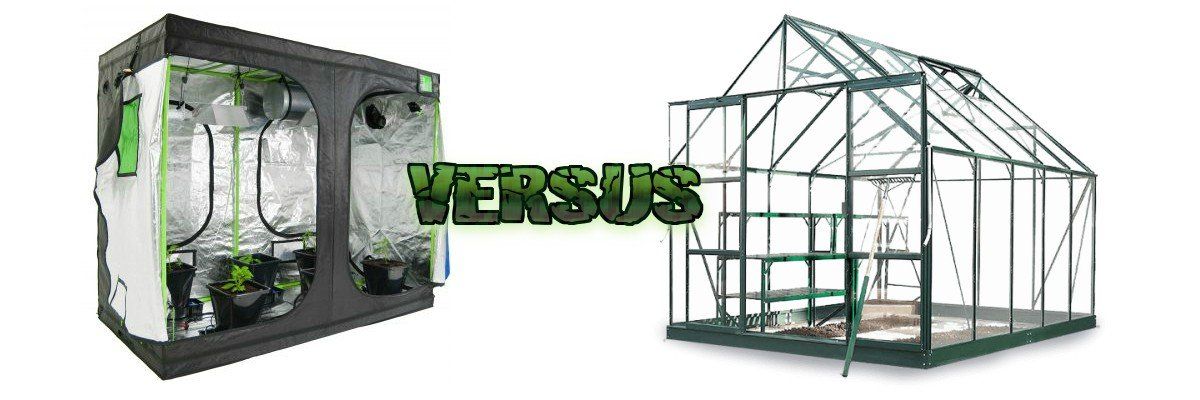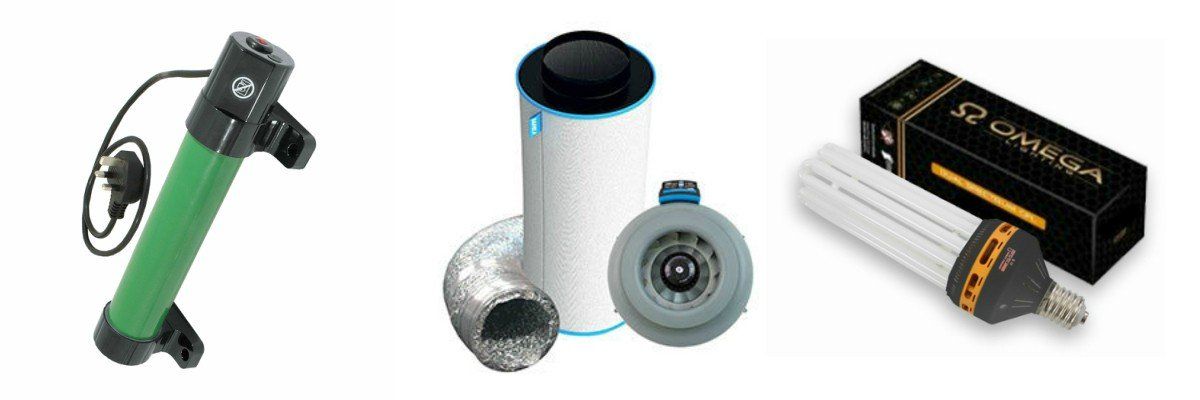Grow Tents versus Greenhouses
How do we grow without a garden?
Where do we grow other than a garden? The more traditional method is to use a greenhouse. Whilst a greenhouse does offer some protection against inclement weather conditions it can require a lot of heating or cooling depending on the time of year. Unless artificial lighting is used the plants are also dependent on natural sunlight whose strength is not consistent and duration is limited at certain times of the year.
An alternative is to grow the plants indoors. But how do we do this without sufficient sunlight? The answer is to use a grow tent!
The significant advantage of using an indoor grow tent is that the ideal growing temperature can be efficiently maintained and sufficient lighting can be provided at any time of day or night. Whilst air conditions and humidity can also be optimised in a greenhouse the natural outdoor weather conditions dictate the timing of this and also add a degree of unpredictability.
The beauty of using an indoor grow tent is that it alleviates many of the hurdles and obstacles that we naturally have due to different seasonal conditions. This means, that when done correctly, we can effectively grow our crops all year round.
Another huge advantage of grow tents is that anybody can produce crops even if they do not have a garden or allotment! Also, there are no worries about running out of windowlene to clean the windows or retrieving your neighbour's football that just broke one!
What is required?
Obviously a grow tent! A grow tent is lightweight fabric that is mounted over a frame to make a cube. The fabric typically has various openings for ventilation and electrical connections. They usually have a panel that zips open so as to easily allow access for inspection, cropping and replenishing.
The thickness of the fabric is an important factor and is expressed in denier
which is the term used to define the linear mass density of the shell. It will be written, for example, as 1000D. Tents commonly range between 600D and 900D - the higher the better, particularly where regular dismantling and assembly will occur.
The inner lining is designed such that it reflects light for the plants to absorb. Again there is a range here between different tents from 50% to 90% reflectivity with the higher being the better. As well as more efficient use of energy, good reflection means that the underlying foliage also benefits from a decent amount of lighting. The consistent availability, quality and direction of lighting is one of the huge advantages that grow tents have over greenhouses.
Grow tents come in a variety of sizes and our stock ranges from 3 square metres right down to half a square metre.
They are relatively easy to install and Green Qube
provide Quick Qube tents that can be assembled or disassembled in minutes.
To provide sufficient heating there are a plenty of versatile heaters available to suit the size of the tent and Hydrogarden
provide some great ones that we stock.
A fan and ducting system will ensure a good airflow so that the plants have sufficient carbon dioxide. The airflow also strengthens the stems of the plants as they grow.
There is a wide range of lighting systems that are designed as a great alternative to natural sunlight and timers are used to ensure the plants are getting the correct amount of heat, light and airflow.
Nutrients
Just as plants draw their food from the soil in an outdoors environment, and just as they must be fed in a greenhouse, nutrients are also an obvious requirement in a grow tent.
There is a wide range of nutrients on the market that are great for indoor growing and also for hydroponic systems.This can be done manually and there are also plenty of automated systems available such as Wilma
which is an engineering collaboration between Atami
and Nutriculture
Feeding does not have to be a guessing game as most manufacturers provide feed charts
which are very useful indeed! A great provider is Vitaponix
and they are getting some good reviews at the moment.
Some nutrients are concentrated and therefore need to be mixed with water prior to use. The amount of nutrients in the water affect its electrical conductivity
(EC) and the EC can also be affected by impurities. EC is a key component in growing systems and there are meters to check this and they are very straightforward to use.
What is fantastic about an indoor tent growing system is that we have substantially more control over the nutrient and water supply to the plants in terms of both quality and quantity.
Pests
Plants in any environment can be prone to pests and disease and there is no exception where indoor growing is concerned. Although much of the growing can be automated it is very important to keep an eye on the growth and especially for this reason.
Pests and diseases can be brought in from outdoors and a common one to watch out for is spider mites
which can be easily eradicated once identified. The article here
gives some useful suggestions on how to avoid them. These include....
- Use your own plant cuttings - other people's could bring mites with them
- Disinfect your grow room after each crop
- Use a set of 'clean clothes' to avoid importing pests from other environments such as parks
- Add a 'bug blocker' to your air intake fans
- Frequently inspect your plants with a magnifying glass
- Immediately take action if required!
Outcome
Although there are several components of a growing system they are effectively the same, whether in a grow tent, a greenhouse, a cold frame or completely outdoors.
The key to success is to have a reasonable understanding of these from the outset and then applying them to a grow tent environment.
The great thing about a grow tent scenario is the amount of control you can have of the growing conditions and what you can achieve as a result. Hydroponics and indoor plant growth is overtaking the traditional agricultural methods and is certainly the way forward!



